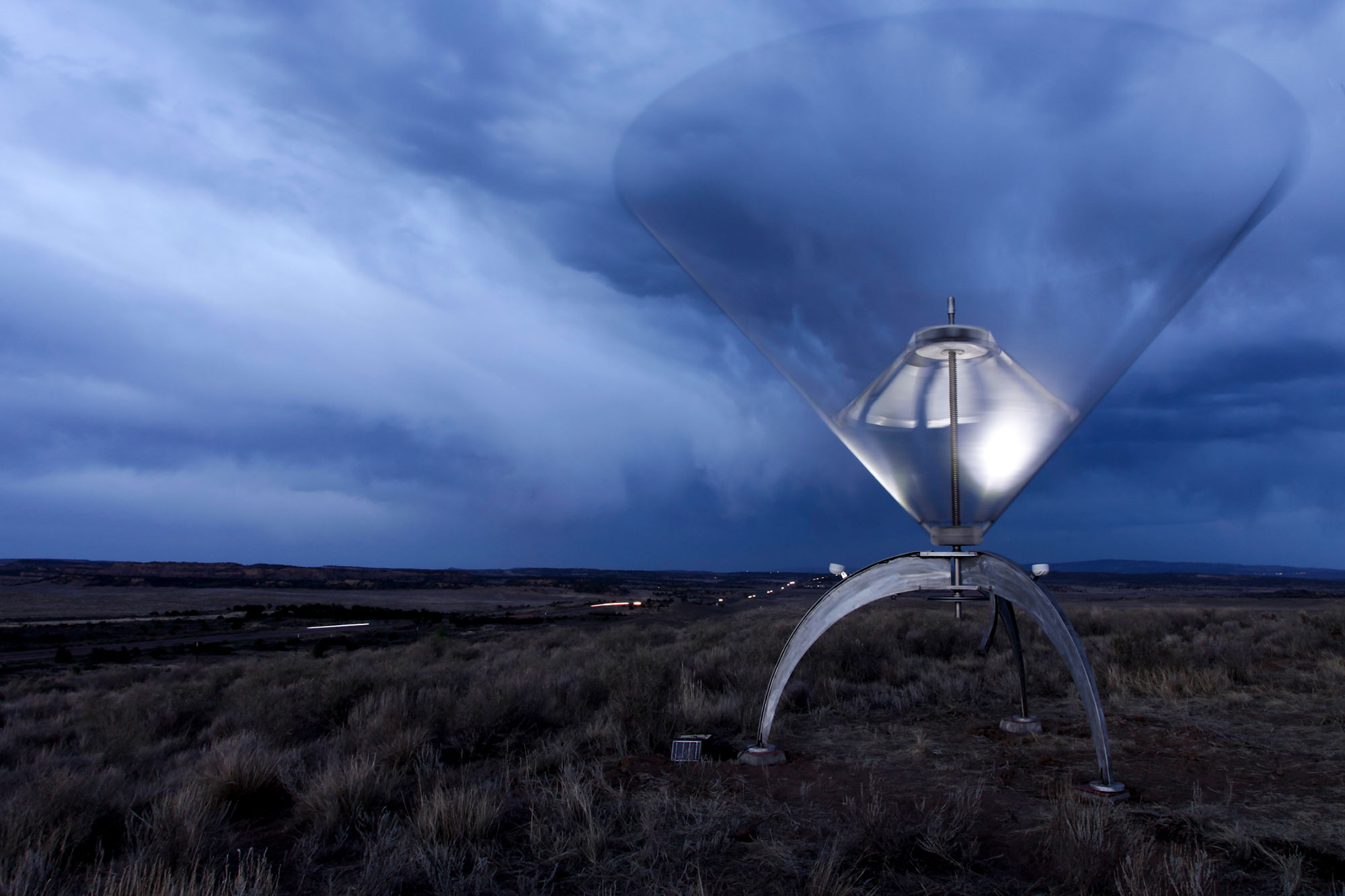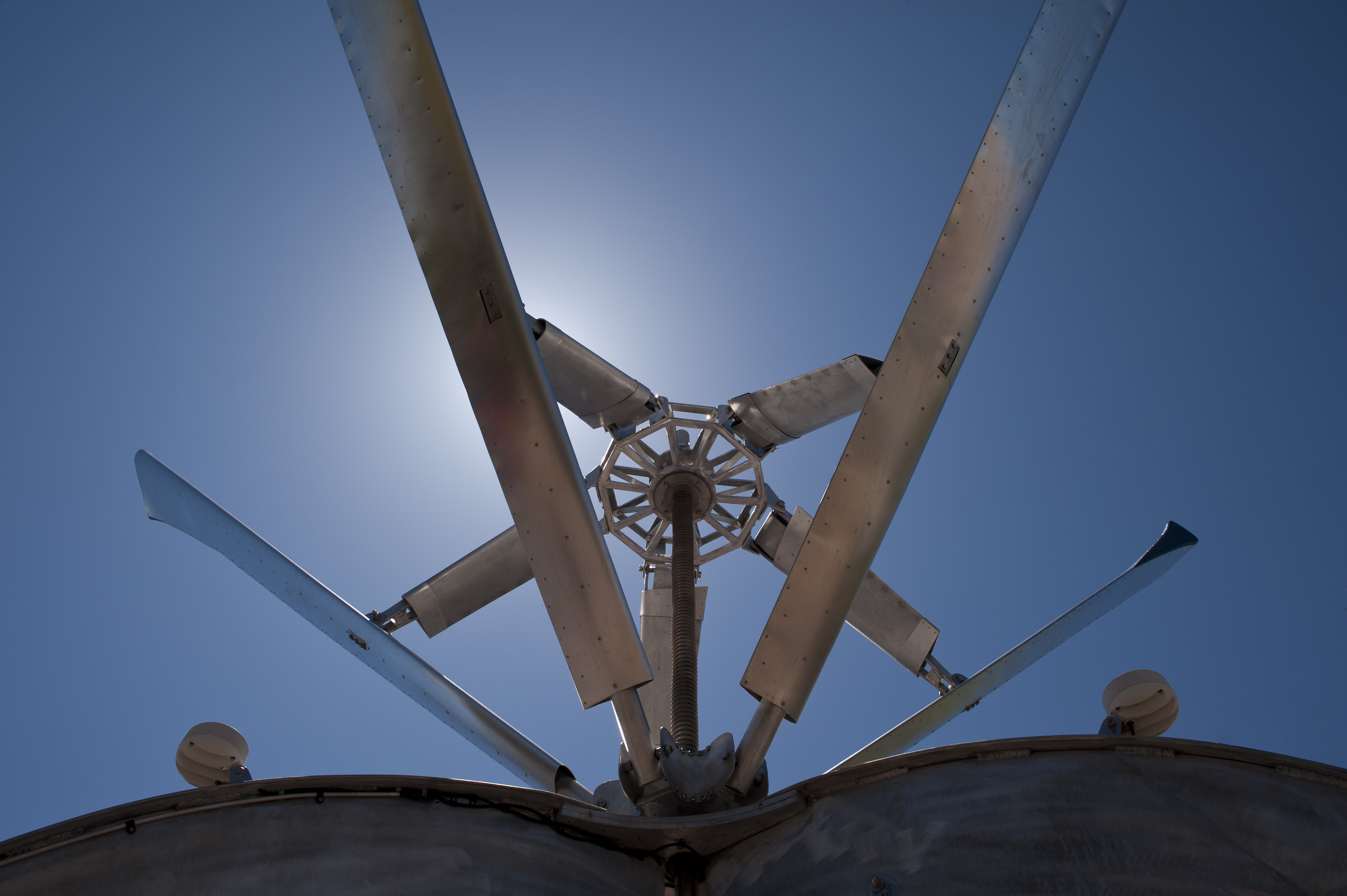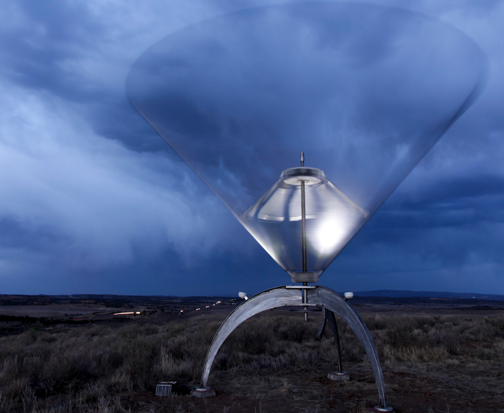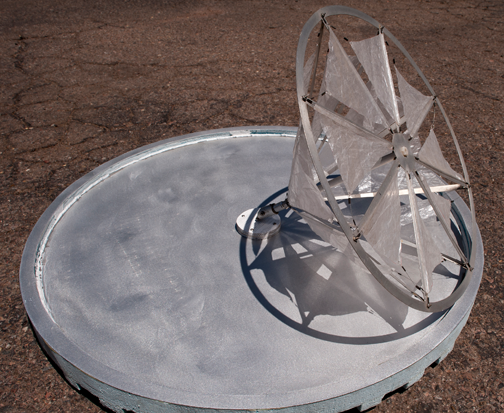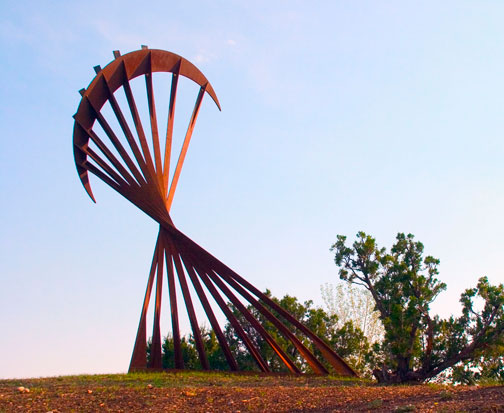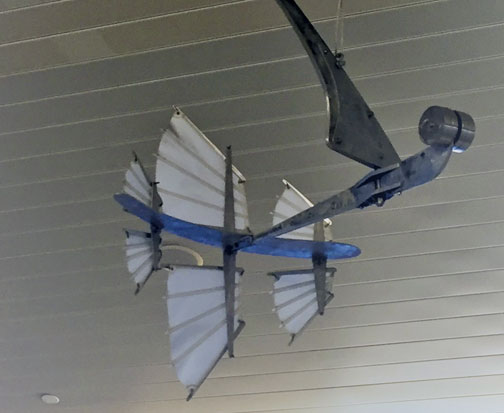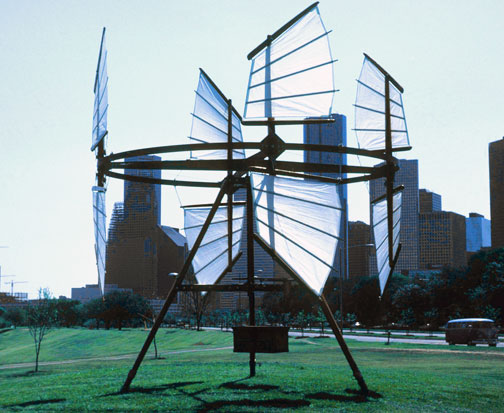Storm King
Navajo Nation and New Mexico Arts TIME project
Window Rock, AZ United States
Materials: Aluminum, stainless steel, carbon fiber and fiber glass resin, halogen floodlights
Date: 1993, completed 2012.
Current Location: Artist’s Studio
Project Team
Artist
Don Redman
Assistant
David Thomas
Photographer
Stephen Lang
Storm King
Navajo Nation and New Mexico Arts TIME project
Window Rock, AZ United States
Materials: Aluminum, stainless steel, carbon fiber and fiber glass resin, halogen floodlights
Date: 1993, completed 2012.
Current Location: Artist’s Studio
Artist
Don Redman
Assistant
David Thomas
Photographer
Stephan Lang
OVERVIEW
Most recently exhibited as part of the 2012 New Mexico Art in Public Places TIME (Temporary Installations Made for the Environment) program, wind-driven Storm King lit up the area on top of a reclaimed coal mine on the Navajo Nation. Designed to make the invisible visible, Storm King was built to produce electricity, which powers LED lights to illuminate the sculpture. Working with the three natural laws of gravity, centrifugal force, and lift, the sculpture creates its own wind-generated electricity and is able to withstand wind speeds up to 85 mph.
Goals
Each year, the NM Arts in Public Places program partners with a local arts community to commission up to ten temporary, visually engaging, conceptually rich, site specific art works for a short-term exhibition. Artists are challenged to create environmental pieces that inspire, question, and engage, the citizens of and visitors to the host community. In 2012, the arts community chosen was the Navajo Nation. The placement of Storm King was vitally important. I positioned it on top of a 1500 foot mountain of toxic coal-mine tailings where wind speeds of up to 85 miles an hour kept the piece in motion for months. The irony of creating electricity using wind was powerful, revealing the beauty, simplicity and ease with which we can produce energy, in contrast to the system of extraction and ensuing destruction to the planet that results from fossil fuel production and burning. A major highway ran below the mountain where the sculpture was. Because of the placement, and the dark skies at night out on the vast Navajo Nation, many passersby saw the lights in the distance. They didn’t know what they were and often mistakenly thought they were observing a UFO.
Process
Dwight Brown an engineer and I have collaborated for over 30 years, dreaming up and fabricating wind machines and monumental kinetics. We both have a love of sailing and boat building as well as being students of aerodynamics. Creating a self-governing system was a difficult task to overcome with an object of this scale that is in constant dynamic motion. Manny Wheeler, of the Navajo Nation Museum was another critical collaborator. In his words, what we did with this project was not just about art, it was about nation building, as non-Native and Native artists from New Mexico came together for the first time on the Navajo Reservation. Wheeler feels that working with New Mexico Arts has brought impactful new art concepts to the youth on the reservation. Each non-Native artist worked with a cultural advisor. Advisors included a Navajo astronomer, a medicine man, a family of traditional weavers, and an environmental activist. Mine was Clarenda Annbah Begay. She helped choose the site and was the liaison who secured permission for me from Chevron, whose reclamation site it was.

